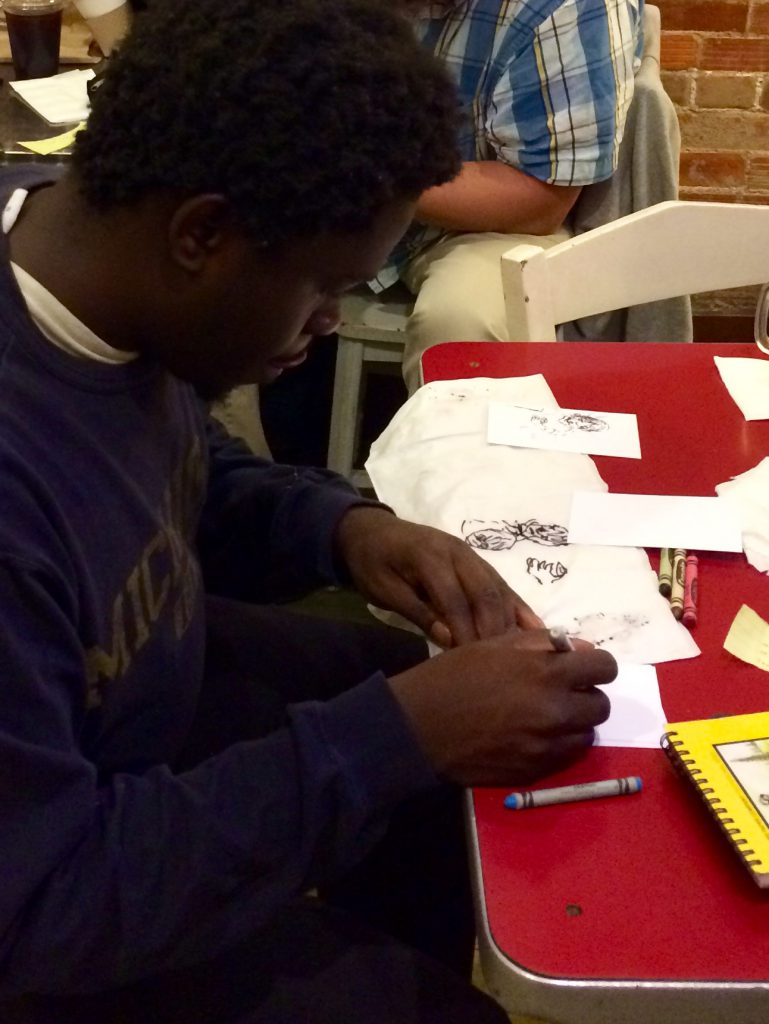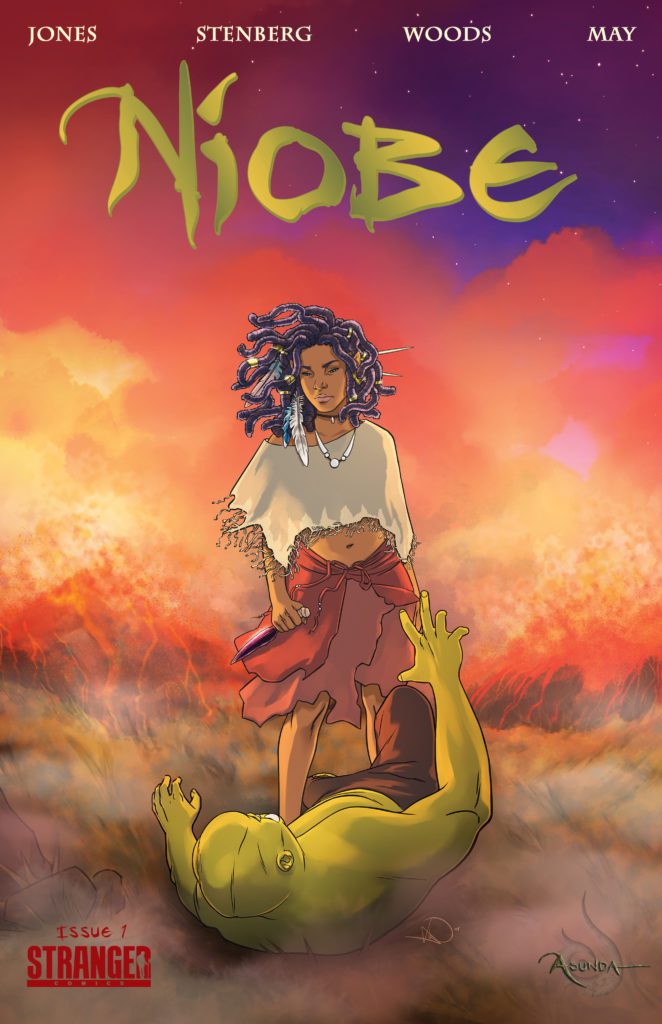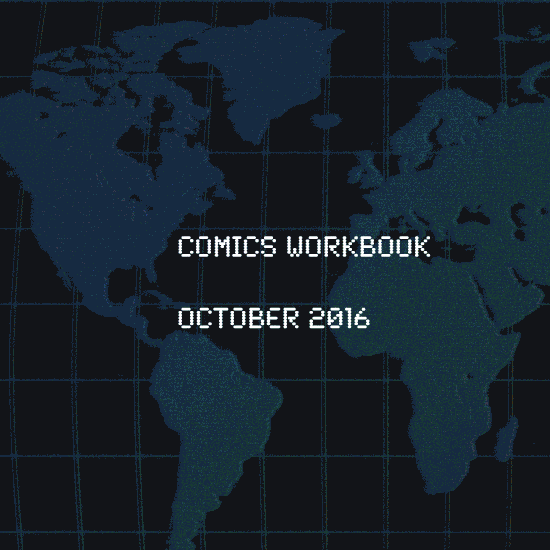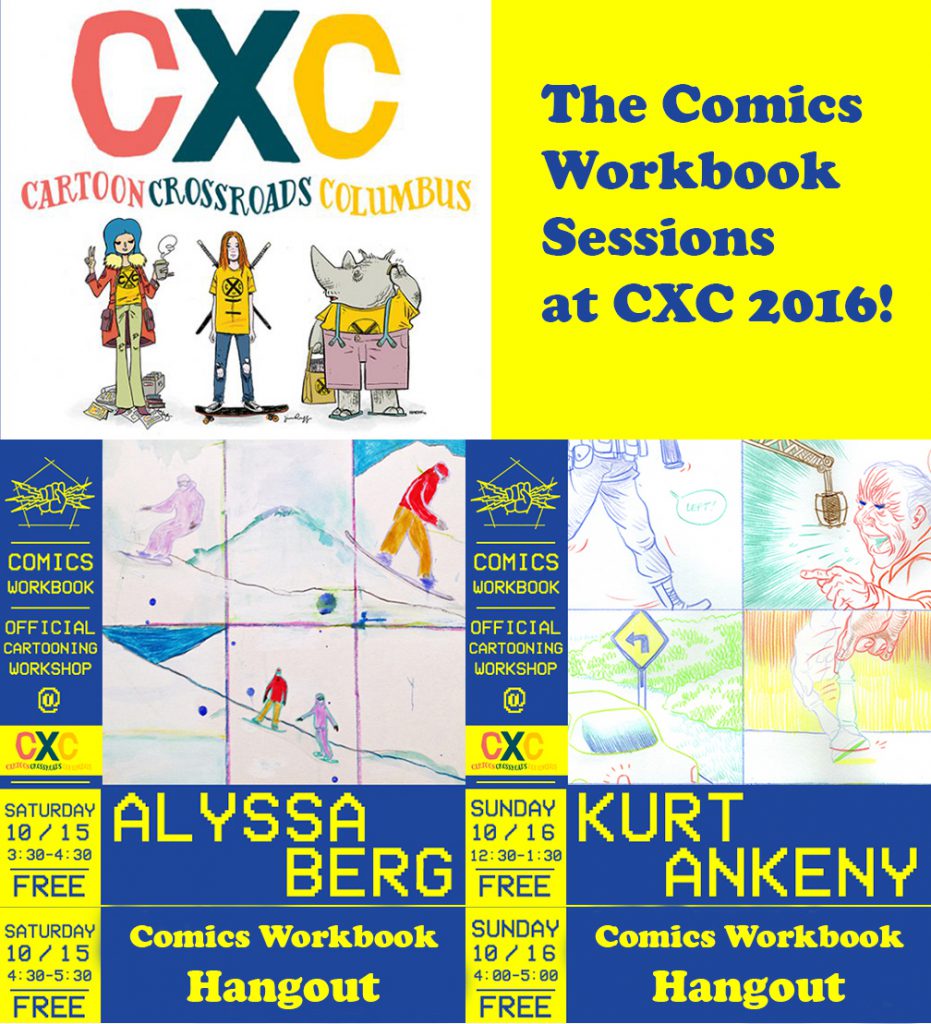Sam Ombiri kicks off the day with thoughts on Paul Chan, Beckett, and the power of a “side project”. Sally Ingraham adds some insights from Kerry James Marshall and a Comics Workbook events and happenings roundup.
—————————————————————————————————
Sam here:
Paul Chan quit making art in 2008 because, as he put it, “I’ve had it”. I’m really not prepared or qualified to talk about Paul Chan’s work so I guess I’ll just somewhat graze over how, or why, he quit. (I’ll re-appropriate what Paul was referring to in an interview – in an attempt to arrive to a point for my own purposes. Some of it he said, but some of it is my fictional version of Paul Chan.)
Paul Chan said that the artists that he’s admired follow the route of what we imagine we want. Since what we want is always changing, one expression of this can be found in quitting, like Duchamp did, or taking a break, like Beckett supposedly did with Waiting for Godot.
I heard from Paul that Waiting for Godot was a vacation for Beckett, before finishing up the trilogy of novels he was working on. Godot is his most famous work, and furthermore he’s more famous as a playwright than as a novelist. I think I prefer Beckett’s novels (which I’ve barely read, I’m like ⅓ through Molloy) to his plays (which I’ve also barely read). That is not to necessarily say that his novels are automatically better since the medium dictates automatic superiority.
What I think, rather, is that development takes place from that change of one pace to another. This can take place when dealing with the same medium – even the same genre, even the same story – but in changing the approach, or having less concern/anxiety dictating one’s work.
What I imagine is that after Beckett returned to finishing the trilogy, he had grown in another aspect he didn’t fully realize. This change is present whether he’s doing plays or novels.
I guess what I get out of all this is: the power of a side project, or side preoccupation, has power that shouldn’t be underestimated.
This totally reminds me of of how Dash Shaw told Sam Alden to just stop working on 8th Grade, and then Sam really benefited from that. He says it at one point in this video:
Jesse Moynihan also says something cool at one point in this video about changing your work, and pursuing growth.
–Sam Ombiri
—————————————————————————————————

When Sam Ombiri isn’t reading Beckett or researching Paul Chan, he can often be found hanging out with other cartoonists in Pittsburgh (above) – and we look forward to sharing some of the comics projects (side projects or otherwise!) that he’s been working on via Comics Workbook soon.
—————————————————————————————————
The Chicago Tribune recently had a great conversation with Kerry James Marshall about the history and future of black superheroes. Marshall, whose career retrospective is bound for the Metropolitan Museum of Art’s new Met Breuer in New York City, has been collecting comics since he was a child – and he has dozens of carefully cataloged binders full of comics that document the experiences of black characters or casts. He has spent a long time watching and thinking about the evolution of black superheroes, and the storytelling pendulum that swings between exploitation and inclusion.
“The majority of black characters are stand-ins for white characters that exist. Or sidekicks. The scope of their narratives is small. They were asked “to fix the black psyche” before engaging the world. “Unlike a Spider-Man, you didn’t have black teens burdened by power they might acquire.” “
Marshall has at least one solution to this:
“...black artists should create original characters, fresh superheroes, removed from the Marvel and DC universes. Talking to African-American comic book artists, you often hear a common theme: Ashley A. Woods, the Chatham native and on-the-rise artist-writer behind indie favorite “Niobe: She is Life,” told me she decided early on to take full ownership of her characters, otherwise “you’re stuck being asked to do black versions of what exists.” Jiba Molei Anderson, a longtime Chicago comic artist whose work is often based in African mythologies, said: “I’m creating my own legacy — I don’t need to create a black Batman, I need to create my brand.” ” – via The Chicago Tribune
Read the rest of this article HERE. (via The Comics Reporter)
Check out some of Jiba Molei Anderson’s work HERE.
Read more about Ashley A. Woods and Niobe: She is Life HERE.
—————————————————————————————————
Chris Visions is in NYC this week for the New York Comic Con – check him out at table T3B!
—————————————————————————————————
If you haven’t gotten a chance to dig into the footage of Cameron Weston Nicholson‘s SPX workshop yet, here’s your reminder! Check it out HERE.
—————————————————————————————————
Comics Workbook is heading to the UK for The Lakes International Comic Art Festival and to Columbus, OH, for Cartoon Crossroads Columbus next week.
Hang out with Frank Santoro, Aidan Koch, Connor Willumsen in the UK – more details HERE.
The team in Ohio will be doing workshops next weekend, and you can sign up in advance to get a seat – details HERE. Advanced signups will end Friday, October 7th, 2016.
—————————————————————————————————
There is still time to get a bid in on the Michael DeForge drawings that we have up for auction – details HERE.
Have you seen the recent collaboration between Frank Santoro and master jeweler Airi Maeno? Check out the Pompeii Medallion HERE.
Help us get Connor Willumsen to The Lakes International Comic Art Festival – this way please!



